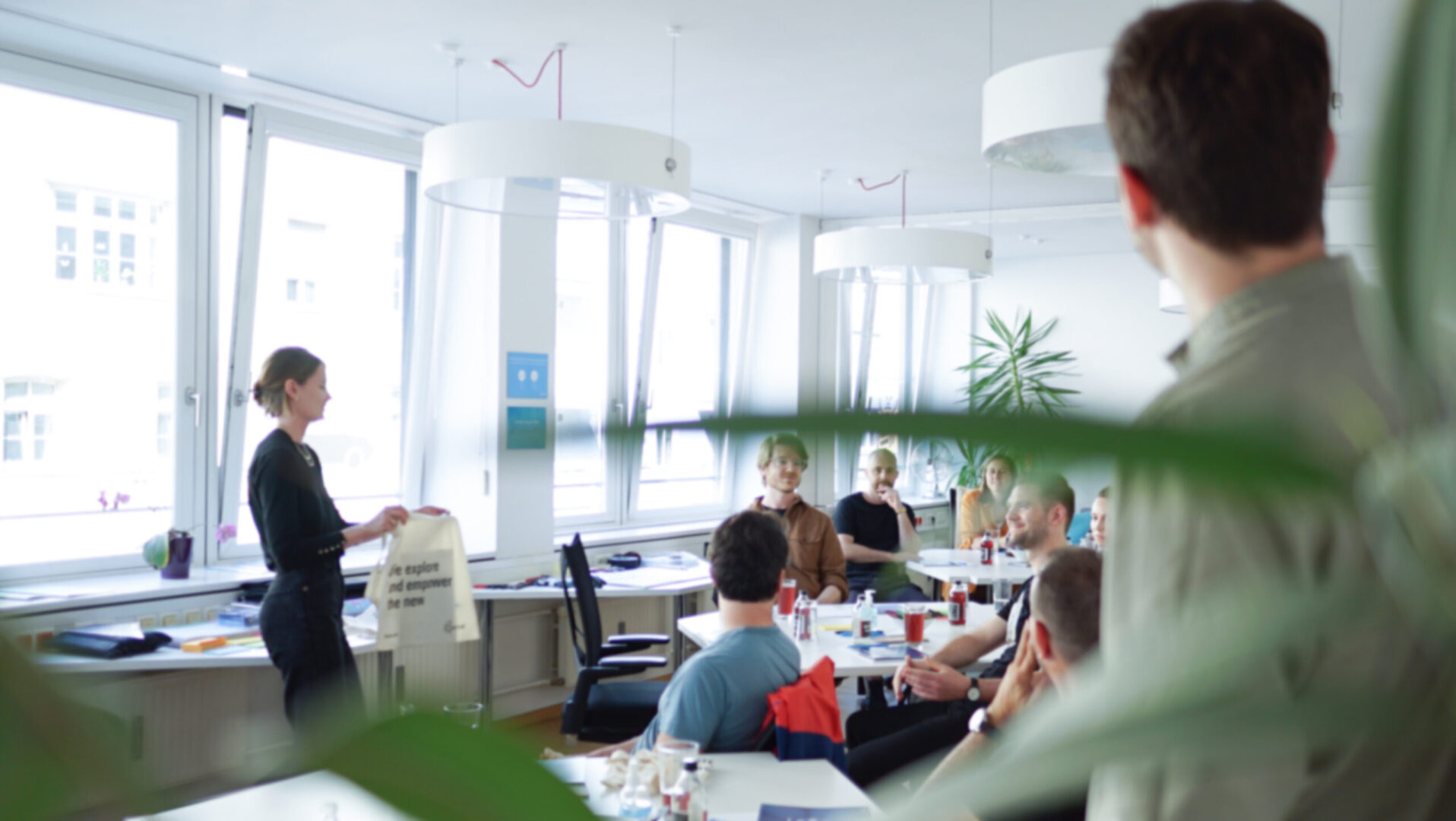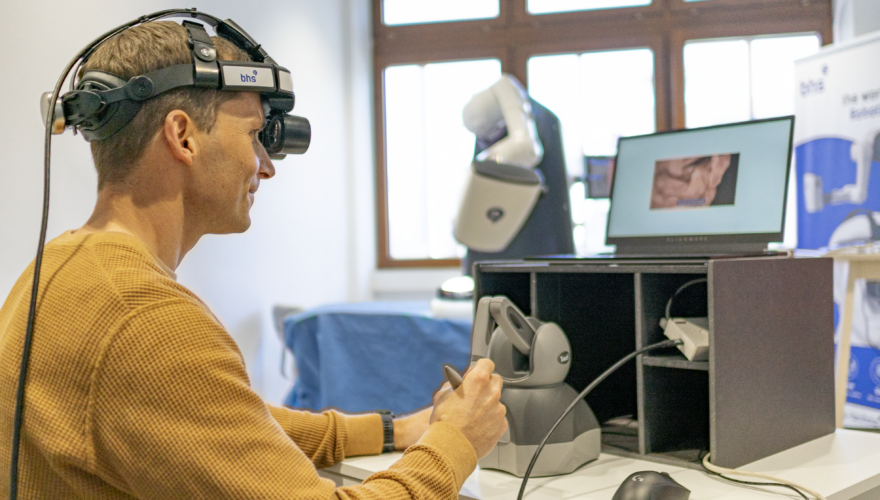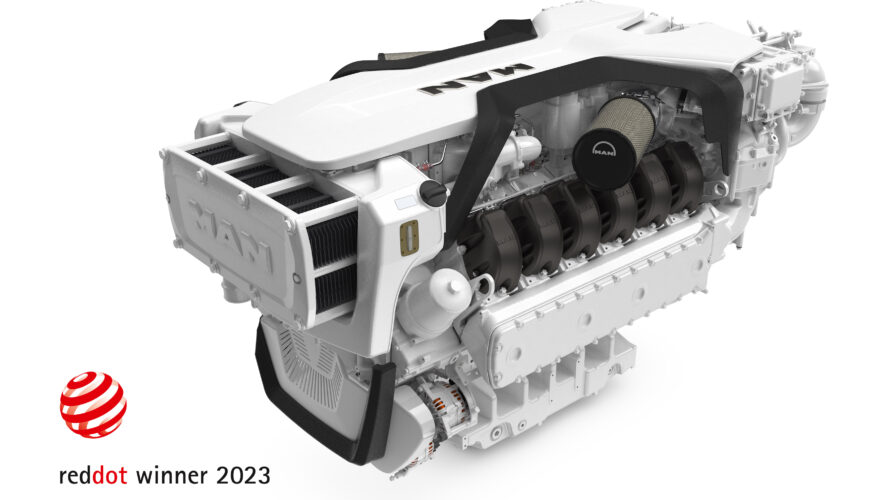HYVE at MCBW
The Munich Creative Business week is Germany’s biggest design event. It serves as a platform for businesses and creatives across all disciplines to present themselves to the professional world and anyone who is interested in various formats, such as round tables, exhibitions, and workshops.
We at HYVE are more than happy that we had the opportunity to welcome creative minds back to our house of innovation. Together with our workshop participants, we traveled to the City of the Future using the methods of Future Scenario Planning and Speculative Design.
During a 2-hour workshop, we took our participants on an interactive journey using creative methods and tools to explore what the city of the future could look like and experience how ideas and scenarios for this envisioned future are created.
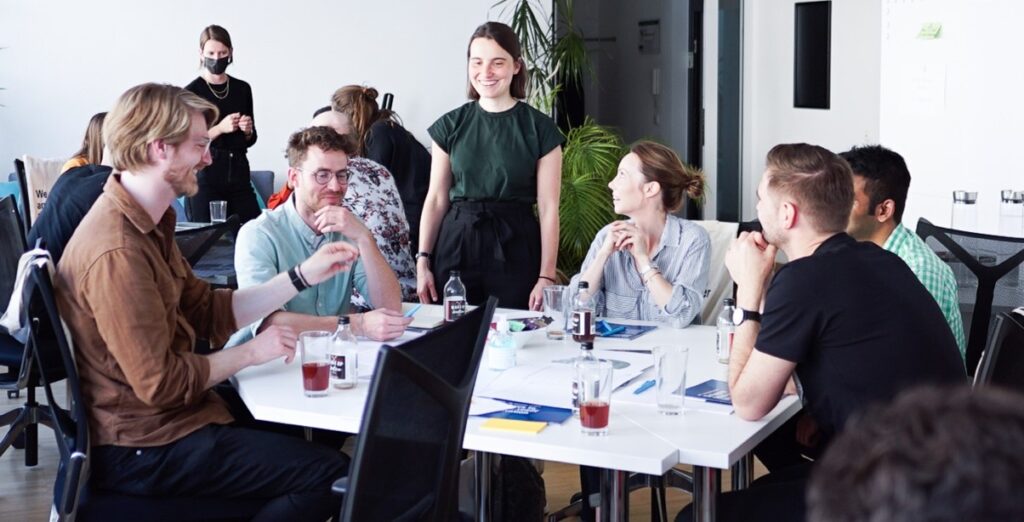
What are Future Scenario Planning & Speculative Design – and how can both serve you?
Future Scenario Planning is not only becoming increasingly important at our House of Innovation but grows in popularity amongst business leaders and decision-makers in general. It provides a strong foundation for making strategic decisions, especially when uncertainty is high. It enables and supports us to make better decisions today to actively shape the future. The method has been seamlessly integrated into the HYVE innovation process as a starting point for future innovation.
Speculative Design allows us to deduct concrete decisions for the future. It‘s used to create products and services for an envisioned future, thereby encouraging imagination and discussion. As described by Anthony Dunne & Fiona Raby, Speculative Design serves as means to imagine how things could be in the future, rather than predicting what the future will look like exactly, thereby helping us to tackle the big societal issues, which Dunne & Raby call ‘wicked’ problems. Where Future Scenario Planning enables us to discuss possible, plausible, and probable futures, Speculative Design aims at finding the preferable future we want to happen. This is done by creating artifacts for an envisioned future that serve as a basis for discussion and that allow us to make decisions for the next steps, leading us closer to the preferred future.

The results of our MCBW workshop were very different and ranged from smaller products to whole travel experiences, all prototyped with everyday materials. And that’s what Speculative Design offers: it allows us to mobilize our imagination and make the future tangible in the here and now. By creating prototypes that are as detailed and close to their true size as possible, they provide an ideal framework for discussion. In our case, the prototyped artifacts enabled us to talk about different types of shopping experiences the group of people we were looking at will encounter in the city of the future. With the help of such artifacts, we can identify potential future problems and discuss their solutions. The clou about the design outcome is that it is not the technologies that are being discussed and whether they are feasible now or in the future, but how people of the future interact with them, what their mindset is like, and ultimately, whether this is the future we want.
If you want more information on how HYVE includes Future Scenario Planning in projects, click here.
About Scenarios & Tribes – our workshop ingredients
The MCBW session in the House of Innovation started with inspiring talks by our HYVE experts, to familiarize the participants with Future Scenario Planning and Speculative Design methods and how these are used at HYVE when working with clients.
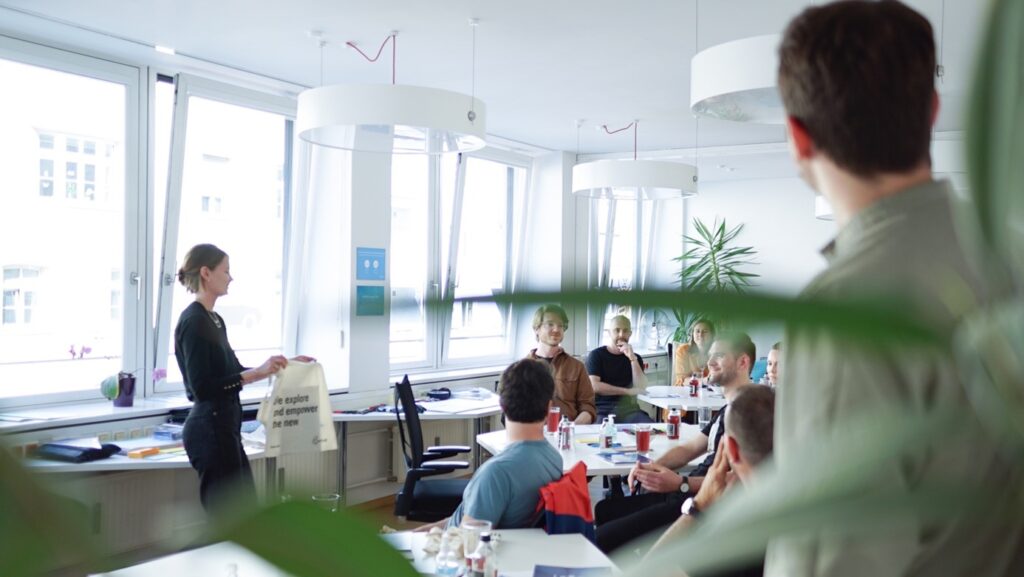
Our scenarios
The process of Future Scenario Planning starts by defining specific future scenarios. Building these scenarios requires a considerable investment of both time and research and is best done in interdisciplinary teams in workshop formats.
Due to time restrictions within the workshop, a team from HYVE took some time before the workshop and established four distinct scenarios using the matrix technique. This builds up based on the following steps:
- Key drivers – It begins with identifying driving forces that have a considerable impact on the topic under discussion. To gather these, big megatrends as well as weak signals are equally important. Tools like the STEEP analysis provide an overview of external drivers. Often, experts are additionally consulted to gain industry-specific insights and lead users are interviewed to incorporate upcoming consumer trends.
- Critical uncertainties – Next, critical uncertainties are identified. A critical uncertainty is a trend or movement that is unstable or highly unpredictable, therefore the impact on the situation is difficult to determine. The two drivers that are the most uncertain build the basis for the scenarios. Here, plausible extremes are identified for the future state of the two most critical uncertainties.
- Scenario Matrix – As a following step, the two critical uncertainties are plotted on a 2×2 matrix, with the plausible extremes at each end, forming four different quadrants. From here, narratives are created for each scenario. It can be helpful to support each scenario with an illustration to provide additional inspiration.
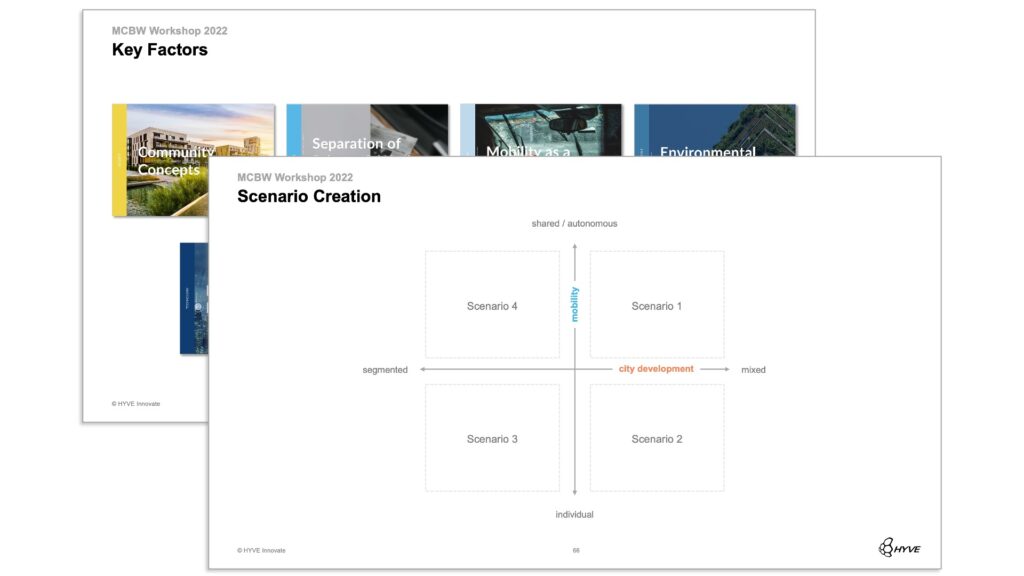
Our workshop scenario matrix: The axes around which the scenarios were created were the level of city development, from a totally segmented city to a mixed urban structure, and mobility, looking at either individual mobility solutions to shared ones. These elements resulted in four scenarios.
We have gathered them in our Scenario Onepager. Don’t miss downloading it above!
Tribes
An important part when looking at possible futures is to think about who will be addressed. At HYVE, we use tribes in addition to personas, as they can help to identify opportunity areas for future product and service developments. Tribes are more open and encounter many more aspects than a single persona. Therefore, they are ideal to work with at earlier stages of the innovation process, or when working with wicked problems, to avoid being too limited in the solution space.
As designing for the city of the future, as we did at the MCBW workshop, is indeed wicked and very complex, working with tribes enabled us to set a focus on a specific group of city residents to narrow down the challenge while keeping the opportunity space open enough for ideas to develop.
In such a process, we use for example mood boards to convey the feeling of a tribe, show what is important to the people within the tribe, what they surround themselves with, and what products and brands are part of their daily lives. Incorporating this step into working with Future Scenario Planning and Speculative Design to explore the future is a helpful way to dig deeper, ask the right questions, and weigh the different trends and their impact as well as prioritize them.
If you are interested to learn more about tribes, also see our blog post.
The Outcome
For the city of the future, we looked at the ‘Silver Sailors’, a tribe that was defined by HYVE experts before the workshop. These are a tribe of people of mid- to higher age that live in the city. They are well-balanced and socially engaged, and enjoy living in the urban context, and experiencing everything the city has to offer. At the top of the list are cultural offerings as well as spending time in good restaurants and cafés. Generally, having a good experience is highly valued by persons of this tribe. As Silver Sailors have already reached the peak of their career, their job is no longer their top priority, however, they still want to be part of the active society. They are used to technology but do not necessarily use the newest technology available.

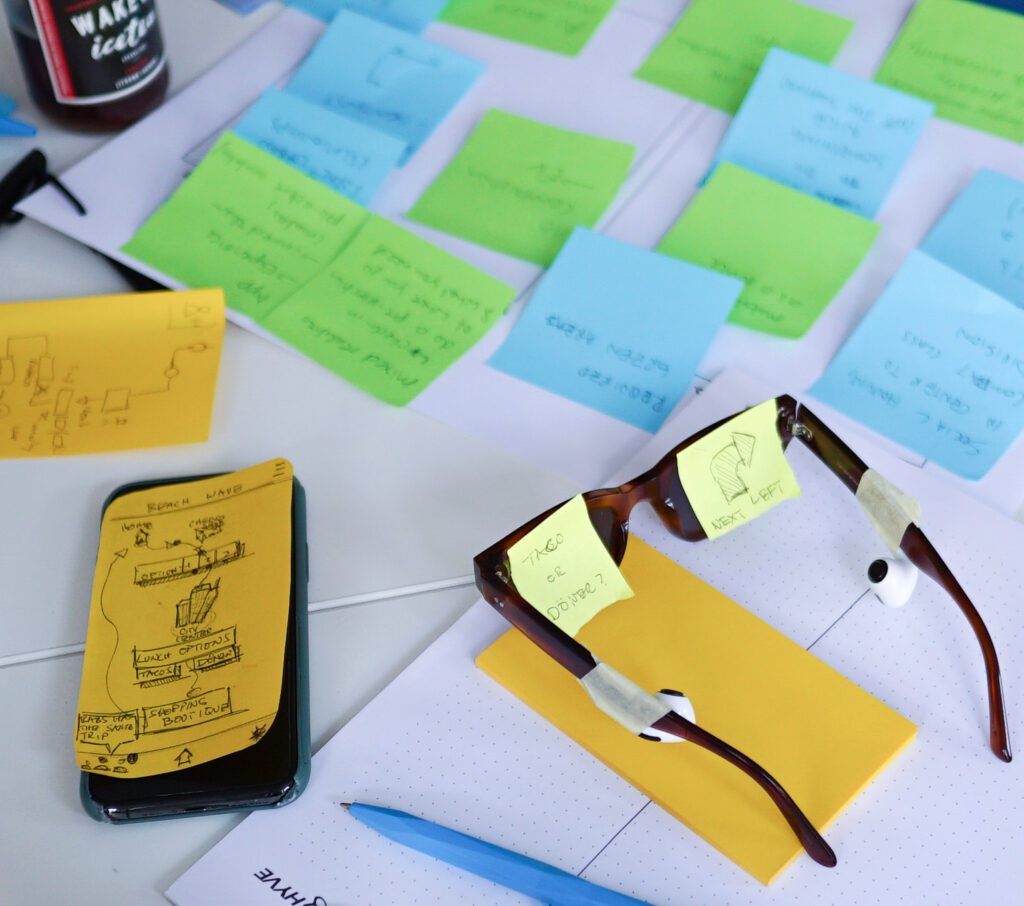
What does a shopping trip of a Silver Sailor look like?
In order to fully dive into the future of our Silver Sailors, we asked our workshop participants to enrich the scenarios using trend cards and templates, keeping in mind the focus question “How does a shopping trip of a Silver Sailor look like?”. At our workshop, each group elaborated on the shopping journey of our tribe in one of the four scenarios. These narratives served as the framework for building artifacts for the envisioned experience. Using everyday materials, the goal of the exercise was to create tangible artifacts that enable to start discussions about the city of the future. Ranging from experience-enhancing contact lenses to gondolas with an all-senses experience, the developed prototypes were as diverse as they are creative. Participants reframed the challenge to be able to tell a story and to design an artifact of the future to address a specific problem, thereby intuitively following the Double Diamond approach of first exploring the problem space to then synthesize and develop a solution. They asked questions such as: “How can we make the small town in our scenario more inclusive and enjoyable by taking away routine clutter?”
During the MCBW 2022, we were able to witness how Future Scenario Planning can be used as a tool to spark creativity even within a very short time. We are always curious to explore new future challenges – what‘s yours? Let us know!
